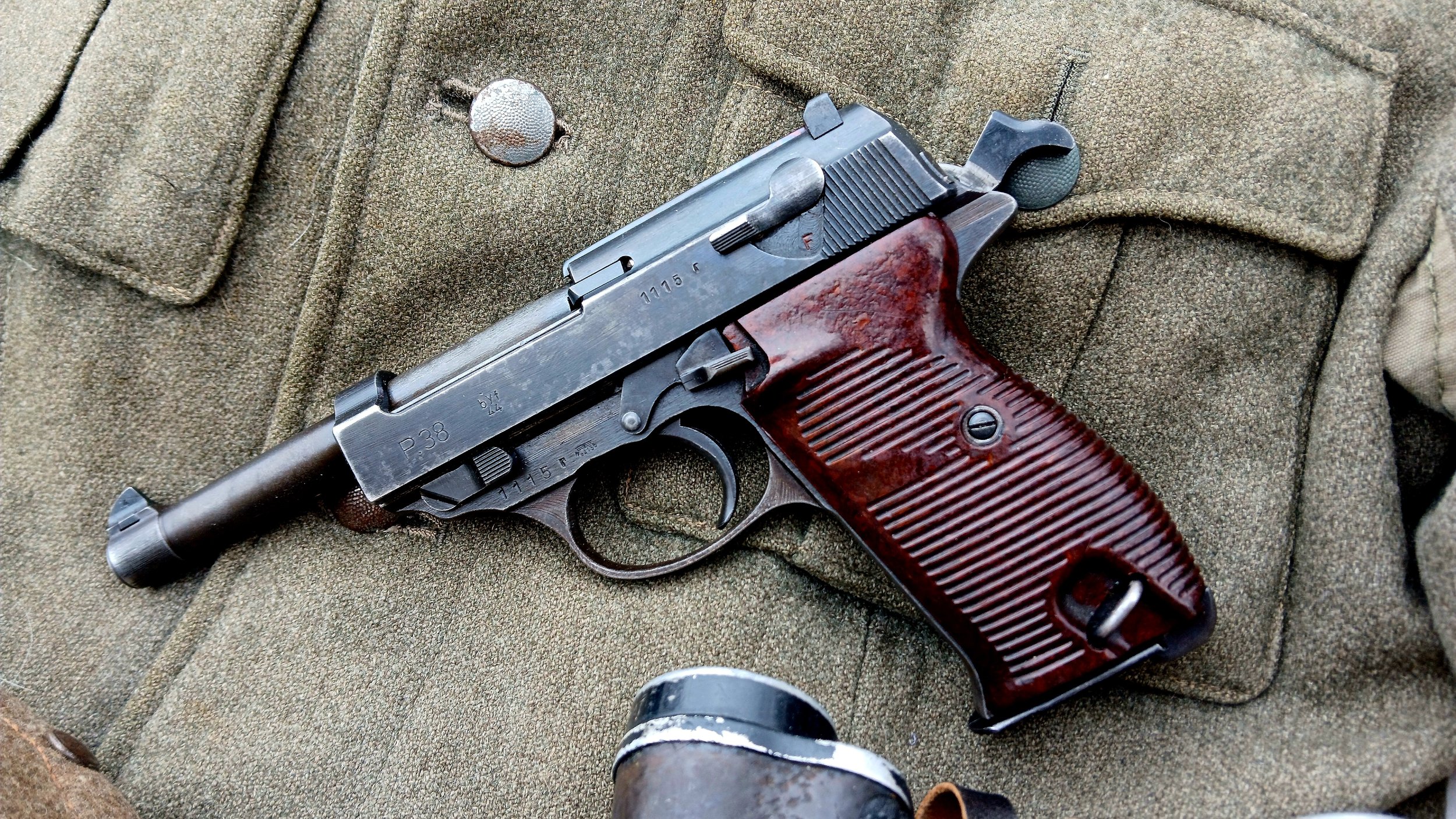
December, 2025
Walter P.38
German Reich
Second World War
Made by Mauser in 1944
9x19mm Parabellum
Categories
Walther P.38
Possibly the best overall handgun in service during the Second World War, Walther’s P.38 was an advanced design, although it was never able to eclipse the older Luger P.08 in the popular imagination.
Replica: Nambu Type 100
Demonstrating a general lack of interest in such a weapon until the very eve of the Second World War, Japan’s only domestic submachine gun would service in relatively miniscule numbers compared to its contemporaries amongst the other major nations of the conflict.
Mosin Nagant M91/30
With the turmoil of revolution behind the newly formed USSR, Stalin’s regime turned to modernization of the nation’s armed forces concurrently to the industrialization of the country.
SACM Mle1935A
Following a wholesale modernization program in the later interwar period, the French adopted a new handgun just in time for the Second World War.
Chinese Contract Kar98k
The end of a decades-long partnership between German arms manufacturers and China was a small lot of Kar98k Mauser rifles sent to Chiang Kai-Shek’s armies in the late 1930s.
Enfield No2 Mk1*
In the lead-up to the Second World War attempts by British government arsenals to make a cheaper alternative to the commercial Webley revolver that would meet with limited success.
Type 97 Arisaka
The standard sniper’s rifle of the Imperial Japanese military in the Second World War was a relatively unimpressive creation, being little more than a standard Type 38 rifle fitted with a scope.
Carcano M38/91
Despite attempts to replace the 6.5mm cartridge that had been deemed obsolete after the Great War, the improved short rifle pattern of the Carcano rifle would service as the official standard issue of the Regio Esercito in the Second World War.
Replica: Mauser M712 Schnellfeuer
The Mauser C96 had been one of the first successful autoloading handguns introduced, and had served around the world before, during and after the Great War. In the interwar period Spanish copies proliferated, including a popular select fire model, prompting a German response.
Mossberg M44US
Faced with a rapidly expanding military and a need to conserve primary small arms for the front lines, the US would turn to a simple but effective bolt action trainer in .22 Long Rifle.
Type 38 Arisaka
Problems with Japan’s first smokeless powder rifle prompted a redesign of the mechanism, leading to one of the strongest and simplest rifles ever produced, which would serve the Empire for almost half a century.
Replica: Sten Mark 2
The British Sten Gun was an extremely simple stamped steel submachinegun developed as an inexpensive replacement for the existing Lanchesters in service in the early phases of the Second World War. The Mark II variant would go on to be the most produced and iconic variant of the weapon, and a replica example is shown here.
Type I Carcano
An interesting hybrid rifle, the Type I is a fusion of the Italian Carcano action to the fittings of a Japanese Arisaka, and is an interesting example of cooperation between the European Axis and the Japanese Empire.
British Victory Revolver
With the onset of the Second World War the British found themselves short of handguns, and just as they had in the Great War they looked across the Atlantic for a solution. They found the popular Smith & Wesson Military and Police Model, and promptly placed an order for a large number in their .38/200 cartridge.
Mosin Nagant M38
The Soviet M38 was intended for issue to specialists and non-combat troops, but its handy nature made it a popular choice in the brutal urban combat that came to characterize the popular image of the Second World War’s Eastern Front.
Vergueiro M1904/39
Faced with a decision between the Mauser and Mannlicher rifles to replace their black powder Kropatscheks, the Portuguese would instead choose a locally designed hybrid rifle for their forces.
Lee Enfield #4 Mk1
As the Second World War loomed, a need to update the venerable Lee Enfield rifle in British service saw the design modernized into the new #4 Rifle, with a series of improvements on the same core principals.
Radom Vis P.35
The excellent handgun adopted by Poland on the eve of the Second World War would go on to be one of the most common in German service during the conflict, seeing service on all fronts of the European Theater.
Included at the end of each posting is a reference to the rarity and average price observed by the author. This is, or course, subjective, and results may vary depending on a variety of factors, including condition, certain markings, etc., while rarity may vary depending on time and location.
Rarity is marked on a scale as follows:
Production (currently produced)
Surplus (Currently available on the surplus market)
Common
Uncommon
Rare
Very Rare



















